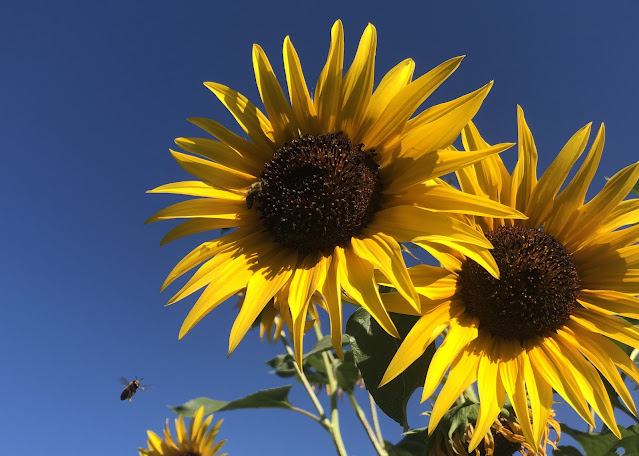

|
|
Yes, it'll continue to be warm and sunny this week, but the "dangerous" heat wave is waning. (Photo: Kathy Morrison)
|
It’s Sacramento, it’s August, it’s hot; what did you expect?
But this summer’s heat has been exceptional. The National Weather Service calls the current heat wave “dangerous.”
Relief may be on its way; we’re headed for more normal temperatures. Instead of scorching, the afternoons will be merely baking.
“Good news: After today, it will be slightly less hot,” tweeted the NWS Sacramento office on Saturday morning. “Not so great news: It will still be pretty warm.”
A heat advisory for the Sacramento Valley called for afternoon highs of 100 to 110 degrees on Saturday; the foothill forecast was 100 to 106.
Expect a big change Sunday. After an expected high of 106 Saturday in downtown Sacramento, the weather service forecasts a dip down to 93 degrees Sunday. Normal for late August: 94.
Temperatures will spike back up to around 100 on Tuesday and Wednesday, then settle down into the mid 90s again, predicts the weather service. Helping those “cooler” days? Lower overnight temperatures, brushing 60 degrees.
That means mornings will be perfect for gardening this week. Take care of chores before 10 a.m.
* Prepare for a fall full of flowers by paying a little extra attention to your garden. Cut off spent blooms from roses, annuals and perennials, then give them a boost of fertilizer. Make sure to water plants before feeding. Roses will rebloom about six to eight weeks after deadheading.
* Harvest tomatoes, beans, squash, pepper and eggplants to prompt plants to keep producing. Give your plants a deep watering twice a week, more if planted in containers. Also, give them a boost with phosphate-rich fertilizer to help fruiting.
* Watch out for caterpillars and hornworms in the vegetable garden. They can strip a plant bare in one day. Pick them off plants by hand in early morning or late afternoon.
* Indoors, start seedlings for fall vegetable planting, including bunching onion, cabbage, broccoli, cauliflower, kale, radicchio and lettuce.
* Sow seeds of perennials in pots for fall planting including yarrow, coneflower and salvia.
* In the garden, direct-seed beets, carrots, leaf lettuce and turnips.
* Plant potatoes.
* Feed citrus trees their last round of fertilizer for the year. This will give a boost to the fruit that’s now forming.
* Camellia leaves looking a little yellow? Feed them some chelated iron. That goes for azaleas and gardenias, too.
* Pick up after your fruit trees. Clean up debris and dropped fruit; this cuts down on insects and prevents the spread of brown rot. Then feed fruit trees with slow-release fertilizer for better production for next year.
Comments
0 comments have been posted.Sacramento Digs Gardening to your inbox.
Sites We Like
Garden Checklist for week of May 5
Survey your garden after the May 4 rainstorm. Heavy rain and gusty winds can break the neck of large flowers such as roses. Also:
* Keep an eye on new transplants or seedlings; they could take a pounding from the rain.
* Watch out for powdery mildew. Warmth following moist conditions can cause this fungal disease to “bloom,” too. If you see a leaf that looks like it’s dusted with powdered sugar, snip it off.
* After the storm, start setting out tomato transplants, but wait on the peppers and eggplants (they want warmer nights). Pinch off any flowers on new transplants to make them concentrate on establishing roots instead of setting premature fruit.
* Trim dead flowers but not leaves from spring-flowering bulbs such as daffodils and tulips. Those leaves gather energy to create next year's flowers. Also, give the bulbs a fertilizer boost after bloom.
* Pinch chrysanthemums back to 12 inches for fall flowers. Cut old stems to the ground.
* Mulch around plants to conserve moisture and control weeds.
* From seed, plant beans, beets, cantaloupes, carrots, corn, cucumbers, melons, pumpkins, radishes and squash.
* Plant onion sets.
* In the flower garden, plant seeds for asters, cosmos, celosia, marigolds, salvia, sunflowers and zinnias. Transplant petunias, zinnias, geraniums and other summer bloomers.
* Plant perennials and dahlia tubers for summer bloom.
* Don’t wait; plant summer bulbs, such as gladiolus and tuberous begonias.
* Harvest cabbage, lettuce, peas and green onions.